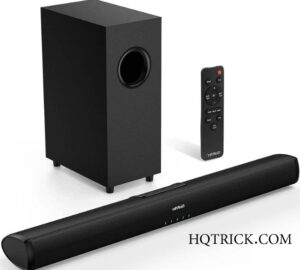Today we are reviewing a new buying guide full of the informations you should know before buying your new OLED TV.
First of all, it is important to know that there are several types of TV screens available in the market, including:
- Liquid Crystal Display (LCD) : This is the most common type of television, which uses backlights to produce the image on the screen.
- Plasma screens : These use electrical discharge technology to produce the image and provide rich colors and wide viewing angles.
- light-emitting diodes screens (LED) : LED lights are used to produce the image, and they are characterized by clarity and high contrast.
- OLED screens : OLED technology produces the image, providing rich colors, high contrast, and very wide viewing angles.
- QLED screens : These LED screens use Quantum Dots technology to improve picture quality and color.
- MicroLED screens : This is the latest technology in television screens, using very high-resolution technology to improve image quality and colors. It is characterized by providing wide viewing angles and very high contrast.
OLED screens

OLED TVs represent the pinnacle of picture quality, boasting self-luminous pixels that deliver unmatched contrasts and true blacks. With this technology, you’ll enjoy crystal-clear images with mesmerizing colors that fully immerse you in your viewing experience.
What’s more, OLED TVs excel at displaying HDR content at exceptional brightness levels, thanks to their wide color gamut that can accurately reproduce billions of colors. Plus, their near-perfect black levels result in great contrast ratios, making them the ideal choice for watching movies or playing video games.
Overall, if you’re after the very best picture quality on the market, OLED TVs are the way to go.
How do OLED screens work?
OLED TVs use a layer of organic LEDs that is controlled at the pixel level, in contrast to full-array LED displays with several dozen light zones. Due to the absence of a backlight, pixels can be turned off completely, enabling the display of true black and resulting in better picture quality.
Theoretically, OLED technology provides infinite contrast due to the ability to display true black, which is particularly evident when watching movies or playing games on devices like the Playstation 5 or the new Xbox Series X/S launched in 2020.
Major TV manufacturers, including LG, Panasonic, Philips, Grundig, and Sony, are increasingly incorporating OLED technology in larger screen sizes, and this trend is expected to continue. While the vast majority of new OLED TVs feature Ultra HD 4K resolution, there are now more Ultra HD 8K OLED TVs available on the market.
Moreover, OLED technology provides high viewing angle stability. Since LCD screens’ backlight technology is not used, the image remains sharp and color-accurate from any angle. There is no gray haze like that experienced with LED TVs when viewed from the side.
What are the advantages of OLED screens?
- Self-lighting pixels: No backlighting is required, allowing for a slimmer design
- No dimming: Neighboring pixels are controlled separately, eliminating the need for dimming areas
- Optimal viewing angle stability: The picture stays sharp and color accurate from any angle you look at it
- Better contrasts: Finer blacks and grays make outstanding contrasts possible
- Flexible Panel: Screen allows for greater screen tilt
- Fast response time and better refresh rate: Individual pixel control reduces response time, resulting in smoother images.
What is the difference between QLED and OLED screens?
Quantum dot technology, or QLED, is another technology used in HDR TVs to produce a wider range of colors and brightness.
QLED is an LCD that uses quantum dots – an extra layer of nanocrystal dots of various sizes that light up when the LED backlight hits them. This results in a wider color gamut and higher brightness. However, QLED displays still cannot match OLED displays in terms of sharpness and true black levels, although the gap is narrowing as manufacturers continue to improve the technology.
HDR on OLED TV: More beautiful colors and better shading effects
In addition to standard 4K resolution, HDR (High Dynamic Range) improves picture quality on an OLED TV, providing increased dynamic range in color, contrast, and brightness.
All major OLED TV manufacturers support the most basic HDR standard called HDR10, which is indicated by tags like “HDR10” or “Ultra HD Premium.”
The most advanced version of HDR is Dolby Vision, which requires the TV to meet more stringent standards for displaying HDR material.
Although there are no uniform standards for HDR formats unlike 4K resolution, some TV brands have introduced their own premium HDR formats, such as Samsung’s HDR10 Plus and Technicolor’s Advanced HDR and IMAX Enhanced. This can cause confusion among customers.
When choosing a TV, we recommend not only looking at HDR support since there is no single standard, and devices can also become compatible with other HDR formats via software updates. It is better to choose devices from the best OLED brands such as LG, Sony, or Philips.
HDMI 2.1: The New Standard
Most of today’s OLED TVs have at least three HDMI ports and support either HDMI 2.0 or HDMI 2.1 standards. The latter was approved only in 2019.
But what makes HDMI 2.1 a new standard?
Essentially, this standard enables newer technologies, allowing for high refresh rates of up to 120Hz in 4K resolution. This feature is essential not only for PCs but also for TVs. The PlayStation 2020 and Xbox One Series X video game consoles, released in late 2020, use refresh rates that exceed the 60Hz mark. Therefore, to future-proof your TV, it is better to choose a set with HDMI 2.1.
We recommend that you pay attention to the number of HDMI connections when buying a TV. With a soundbar, Fire TV Stick, and game console, three HDMI sockets are already occupied.
Flat TV, flat sound?
Because OLED TVs do not require a backlight, they usually have a sleek, narrow enclosure. Although this flat panel TV is great for wall mounting, the sound quality may suffer from reduced resonance room. If you do not use headphones or a full surround sound system, space-saving soundbars are a good alternative.

Soundbars are becoming more popular because they can greatly enhance your home cinema experience for a relatively low cost.
Moreover, the space-saving soundbar can be installed in just a few minutes, for example, under a wall-mounted TV.
Some TVs and soundbars support the Dolby Atmos audio format, which includes top-of-the-line audio for a full listening experience. You don’t have to worry about extra cable clutter because almost all of today’s TVs have at least one HDMI port with Audio Return Channel (ARC). This allows you to use HDMI as an audio input and output, and send audio from external media devices to your TV and speakers. Thanks to this ARC connection, you can enjoy excellent sound quality for all your devices.
